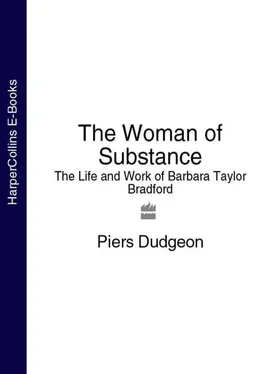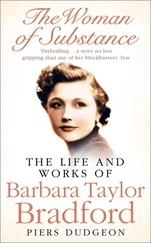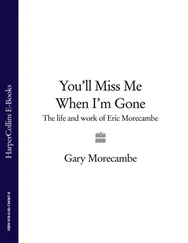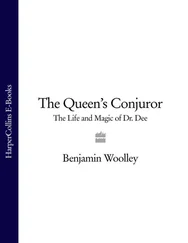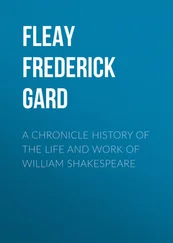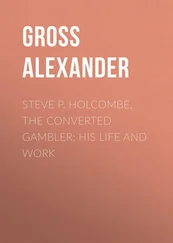The closeness and reliance of Barbara on the family unit was never more clearly shown than in the only time she spent away from home during her early childhood, as an evacuee. The school log reads: ‘ 1st September 1939, the school was evacuated to Lincoln this morning. Time of assembly 8.30, departure from school, 9, to Wortley Station, departure of train, 9.43 .’
The school stayed closed until 15th January 1940: ‘ Reopened this morning, three temporary teachers have been appointed to replace my staff, which are still scattered in the evacuation areas. Miss Laithwaite is at Sawbey, Miss Maitland at Ripon, Miss Musgrave at Lincoln and Miss Bolton is assisting at Meanwood Road. The cellars have been converted into air-raid shelters for the Infants. Accommodation in the shelters, 100. Only children over 6 can be admitted for the present. ’
‘I went to Lincoln,’ remembers Barbara, ‘but I only stayed three weeks. It was so stupid to send us to Lincolnshire. I remember having a label on me, a luggage label, and my mother weeping as the school put us on a train. I was little. I wasn’t very happy, that I know, I missed my parents terribly. I was very spoiled, I was a very adored child. My mother sent me some Wellington boots, so it must have been in winter. She’d managed to get some oranges and she’d put them in a boot with some other things, but the woman had never looked inside. So, when my father came to get me the oranges were still there and had gone bad. My mother was furious about that.
‘Daddy came to get me. He’d gone to the house and they said, “She’ll be coming home from school any moment.” He said, “Which way is it? I’ll go to meet her.” And I saw him coming down the road and I was with the little girl who was at the house also. I remember it very well because I started to run – he was there on the road with his stick, walking towards me . . . and I’m screaming, “Daddy, Daddy, Daddy!” He said, “Come on, our Barbara, we’re going home.” We stood all the way on the train to Leeds. I was so happy because I missed my parents so much it was terrible. I was crying all the time – not all the time, but I cried a lot, I didn’t like it. I didn’t like being away from them. I loved them so much.’
I lead us back out of the gate and we return to the present with more sadness than joy. Walking further up the lane, which has a dogleg that leads eventually out onto Hill Top Road, we explore a steep track down the hill to the right, which Barbara calls ‘the ginnel’. Later I discover from Doreen Armitage, who also grew up in the area and let us into the church, that this is an ancient weaver’s track: ‘They would bring up the wool to the looms from the barges on the canal there.’ And, sure enough, I see on today’s map that it is marked as a quarter-mile cut-through to the canal across Stanningley Road. Barbara was lost once more in her own memories – the fun she had as a little girl skipping down the ginnel – before again being arrested by the intrusive present: the gardens behind Gisburne’s Garage, once so lovely, have been built upon and obscured.
Despondently we make our way back up the ginnel towards the moor where she would often play after school. Past the main gate of The Towers we emerge from a tunnel of trees into a wide-open space, flanked on our left by an estate of modern houses, which has replaced the ‘lovely old stone houses’ of her youth. Off to the right, we come to what was always referred to as ‘the moor’, but is no more than half an acre of open ground, where now a few strongly built cart-horses are feeding. On the far side of it is a wall and some trees. Barbara at once exclaims: ‘That’s the wall! When you climbed over that wall, you were in something called the Baptist Field – I don’t know why it was called that, but . . . we used to play in that field, some other children and I, we used to make little villages, little fairylands in the roots of the trees, which were all gnarled, with bits of moss and stones and bits of broken glass, garnered from that field, and flowers.’
Memories of the Baptist Field had been magical enough to earn it, too, a place in A Woman of Substance all of forty years later. In the novel, the field promises entry to Ramsden Crags and the Top of the World, symbol of the spirit of Yorkshire.
Barbara’s fictional recipe may involve real places, but it is the feelings recalled from her youth that are especially true in the novels, and overlooking the Baptist’s Field I felt in at the very source of a little girl’s teeming imagination. As with Emma Harte, the years peeled away on her feelings as a child and ‘she had a sudden longing to go up to the moors, to climb that familiar path through the Baptist Field that led to Ramsden Crags and the Top of the World, where the air was cool and bracing and filled with pale lavender tints and misty pinks and greys . . . Innumerable memories assailed her, dragging her back into the past.’ ( A Woman of Substance )
‘My father used to walk up here sometimes and go for a drink at the Traveller’s Rest,’ Barbara says, breaking the silence. I had already noted the pub on Hill Top Road. Walking as far as we could up Tower Lane would bring us round to it. Later, Doreen Armitage would recall sitting up there ‘with me father and me Uncle Fred; we used to sit there on a Sunday morning.’ Barbara said she used to sit there with Winston: ‘We were probably waiting for the pub to open, I should think! I used to come here with my father, and we would sit outside and my mother would have a shandy. He liked to go out for his pint, you know, and have his bet . . . Ripon, York, Doncaster races. He bred in me a love of horses and racing.’
Barbara’s father, Winston Taylor, was born on 13th June 1900 at 6 Wilton Place, Armley, the first child of Alfred and Esther Taylor. ‘Daddy was called after Winston Churchill, who had just escaped from the Boer War.’ On Barbara’s admission, Winston is Vincent Crowther in Act of Will , the firstborn of Alfred and Eliza Crowther. He is also Emma Harte’s brother, Winston, in A Woman of Substance . ‘The fictional Winston Harte looked like him, thought like him, and had many of his characteristics,’ Barbara told me.
I also learn that she based Emma Harte’s father, ‘Big Jack Harte’, who, as a Seaforth Highlander, fought the Boers in 1900 and ‘could kill a man with one blow from his massive fist’, on Winston’s father, big Alfred Taylor, ‘because a certain ingredient of physical strength was required in the character of Emma’, the woman of substance she was concocting.
‘I loved my grandfather. He was in my mind when I created Jack Harte. He had a moustache, all lovely and furry white, and white hair. Big man, big moustache. He used to hold me on his knee, give me peppermints and tell me stories about when he was a Sergeant Major in the Seaforth Highlanders. He loved me and I loved him.’
Grandpa Alfred Crowther in Act of Will also serves as a Sergeant Major in the Seaforth Highlanders, and in A Woman of Substance Emma’s first husband, Joe Lowther, and Blackie O’Neill join the regiment in the First World War.
The real-life Alfred Taylor, who occasioned these many references in Barbara’s fiction, is described as a forgeman on his son Winston’s birth certificate and as a cartman on Winston and Freda’s marriage certificate. Barbara remembers him as the latter, as the Co-op drayman – the man who looked after the horses and drove the cart carrying stores for the Armley link in Britain’s first supermarket chain.
The senior Taylors lived five minutes away from Tower Lane in Edinburgh Grove, off Town Street. ‘The house was a Victorian terraced house with a series of front steps, but also a set of side steps leading down to the cellar kitchen. It was a through-house, not a back-to-back, but I can’t remember if there were doors on both sides. They then moved to 5 St Ives Mount, two streets closer. This was also a Victorian terraced house with front steps down to the cellar kitchen, where you’d always see my grandmother baking. Both were tall houses as I recall.
Читать дальше
